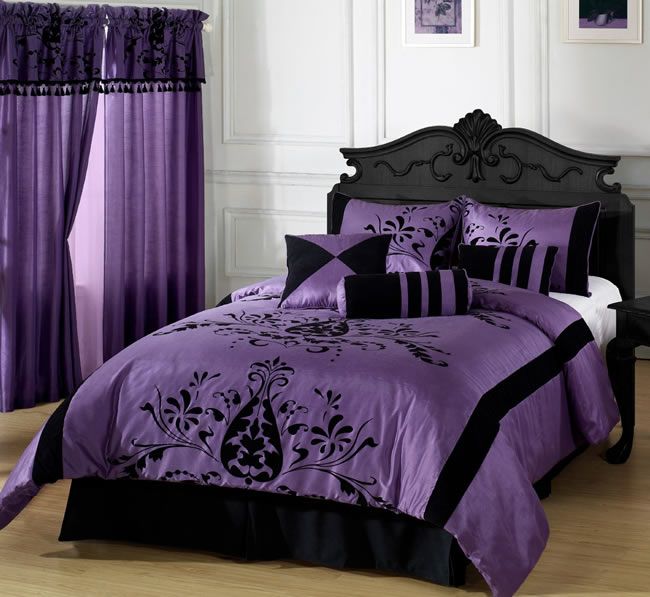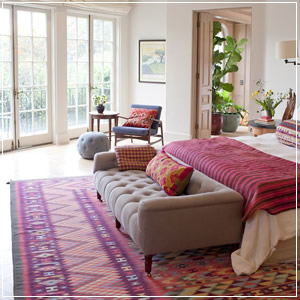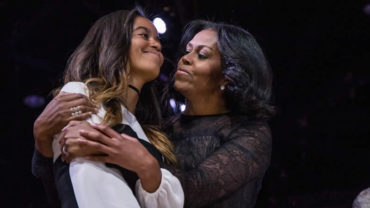Color is an amazing thing. Regardless of the décor or style of a bedroom, color alone has the capacity to increase the energy of an otherwise yawn-worthy room or bring a much-needed element of estfulness into an otherwise hectic one. In fact, color has been found to influence people’s thoughts and moods, which is why it is so important to choose the right color for the bedroom, particularly if you’re decorating it in a monochromatic (single color) way.
While not everyone has the same reaction to every color, it has been found over time that certain colors typically evoke certain reactions from the majority of people. Of course, the hue or tone (lightness or darkness) of a color plays a significant role in its effect, so it’s important to consider this as well, particularly in a monochromatic space.
It is exactly for these reasons – the fact that colors have definite psychological effects – that you must choose your color palette wisely if your bedroom is to be the space you want it to be.
To help you make a better decision about your future monochromatic bedroom, we’ve compiled this article with plenty of inspiring photos and descriptions about the potential of many colors – their typical effect, aura, and use in a bedroom setting. Let’s find out more about specific colors you may be considering.
ORANGE
Orange in and of itself is an energetic, enthusiastic color. It’s not surprising, then, that its vibrancy and boldness foster a sense of inherent confidence and joy. In fact, many associate the color orange with laughter and celebration – two joyful things that would make a monochromatic orange bedroom a happy place to be.
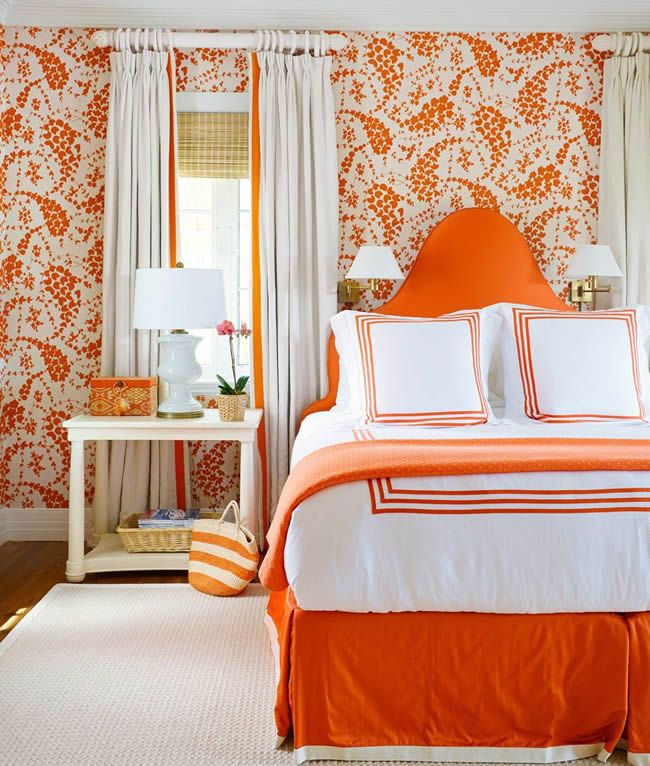
YELLOW
Similar to orange (its color wheel sister, in fact), yellow is sunny and bright and inherently exudes cheer. A happy color, yellow naturally brings happiness into a space – and who doesn’t want their bedroom to be a place of joy? But did you know that yellow has also been linked to increases in mental agility and intelligence? Something about the bright color increases the focusing capacity of our brains. It also has been associated with stimulating conversation.
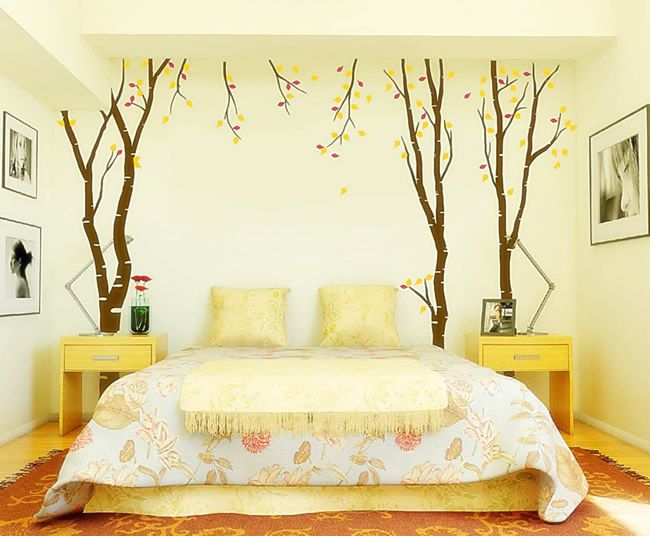
BRIGHT RED
Red is associated with inspiring courage and fearlessness while also drawing people together. The person who wants a bright red bedroom will likely have plenty of inherent self-confidence, but in case this isn’t true, red will help to increase that characteristic. One thing is for certain – a monochromatic red bedroom will be energetic, stimulating, and fortifying.
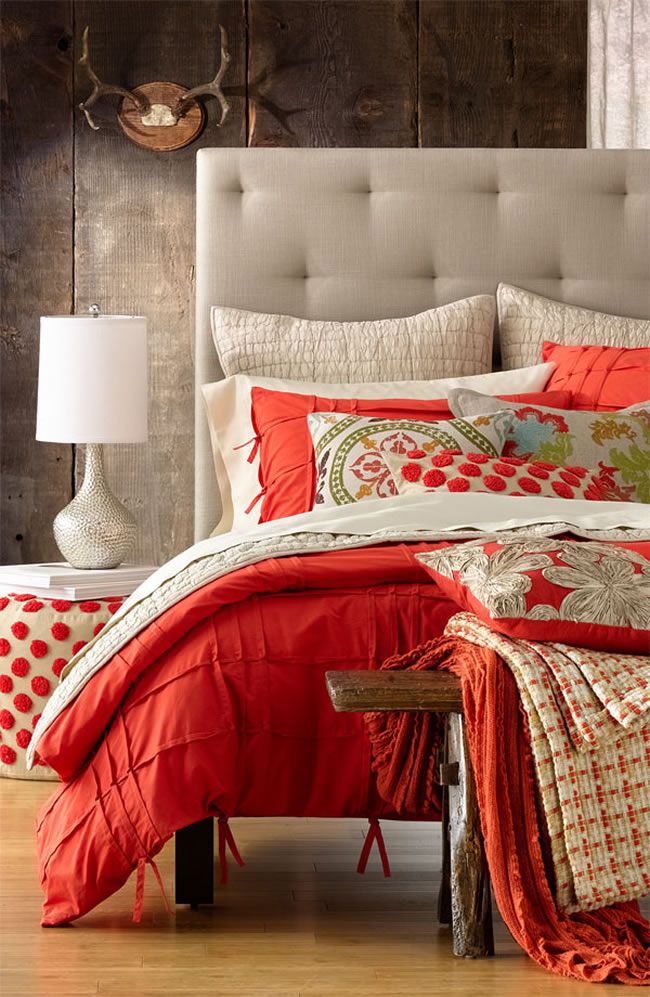
DEEP RED
Red roses symbolize passion, and it’s no coincidence that this is the case. Deep red is a passionate color that awakens and arouses our emotions. Some have said that deep red enables us to forego inhibitions and, consequently, express ourselves freely. This could be quite a bedroom benefit!

DEEP, DARK BLUE
Blue is well-known for its soothing capacity; physiologically, it has been shown to reduce blood pressure and slow respiration. This is an excellent choice for bedrooms in which restful sleep is the primary goal of the space. Blue is also connected with efficiency and purification in thought process (get rid of that mental clutter!) and, as such, a great color to aid in making wise decisions. Deep blue in particular can help to increase perspective. It’s important to remember that darker colors typically have a warm and sophisticated aura, which is helpful to know if you want your large bedroom to feel more intimate and cozy.

DARK PURPLE
The color of royalty for a reason, dark purple exudes luxury, sophistication, and drama. The rich tones are also associated with creativity and add an unspoken aura of importance to the bedroom. Overall, deep purple provides depth to a monochromatic bedroom, although you should be careful not to go too dark, as it is also the color of sadness.
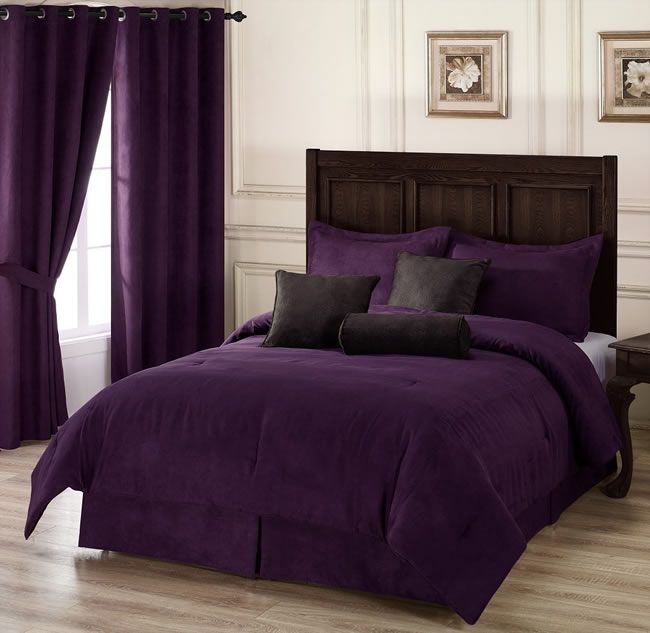
LIGHT BLUE
Almost inevitably, when one thinks of things that are lighter blue – the sky on a sunny day, the ocean waves, even cotton candy at a fair – an almost immediate feeling of calm and serenity follows. In fact, harmonious light blue has been shown to foster tranquility and peace while simultaneously soothing aggression and reducing tension. Quite a nice choice for a monochromatic bedroom, we think. It is helpful to remember, however, that light blue has the tendency to appear cooler than one might think, especially in larger doses.
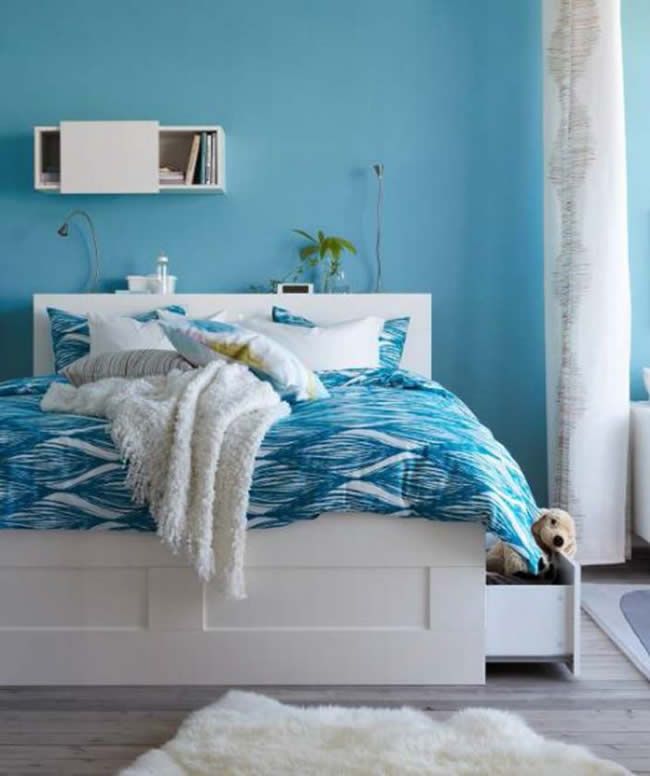
AQUA
As a bluey-green or a greeny-blue, aqua combines the best of both colors: it’s the perfect blend of soothing and restful coloring with just enough brightness to keep things fresh. Aqua is known for its ability to evoke relaxation (think of the gradients of ocean water on a gorgeous day at the beach) and to inspire trust. It’s actually been found to encourage sleep and dreams – why you wouldn’t want more of that in your life (and, thus, in your bedroom), it would be hard to imagine.
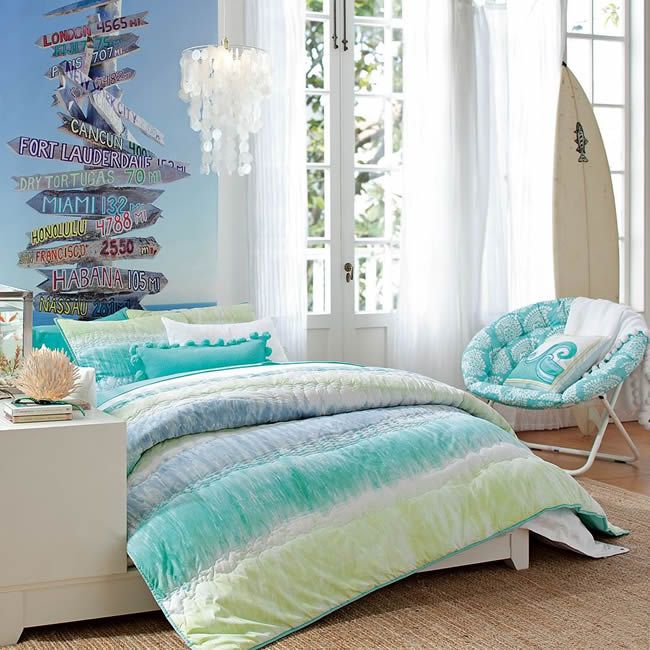
GREEN
As nature’s primary color, green is known for being the most restful color on the eyes. As such, a monochromatic green bedroom is an excellent choice – lovely for unwinding after a long day, and retaining the aura of warmth and comfort. In fact, some people believe that, with its relaxing vibe, green has the ability to reduce stress, rejuvenate, and enhance physical, mental, and emotional well-being. Green is connected with growth and new beginnings and is believed to promote wealth (both monetarily and the riches of a happy life). As the poster color for nature, green is also associated with balance, healing, and nourishment…and fertility. If you love it anyway, choosing this hue for the bedroom seems like a no-brainer!
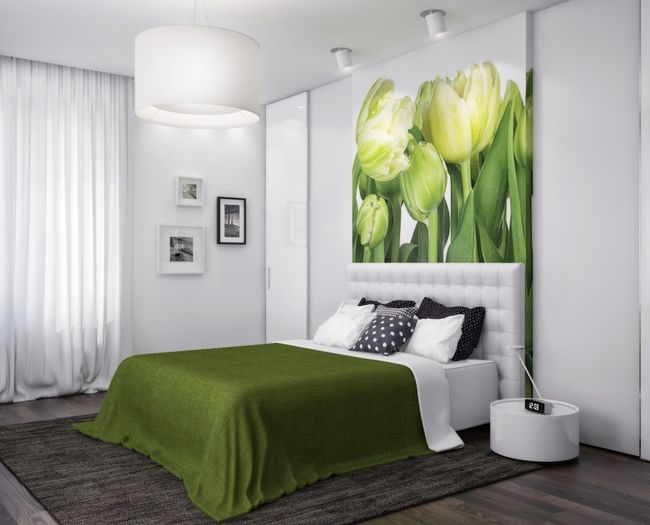
LIGHT PURPLE
Lavender and other shades of lighter purple tend to be associated with enhanced spirituality and compassion. Surrounded by these softer tones, experts believe our thinking processes and thoughts themselves will be elevated as we receive new inclinations and fresh perspectives with regard to emotional issues, in particular. In a light purple bedroom, we are more likely to have the desire to be present in life itself.
